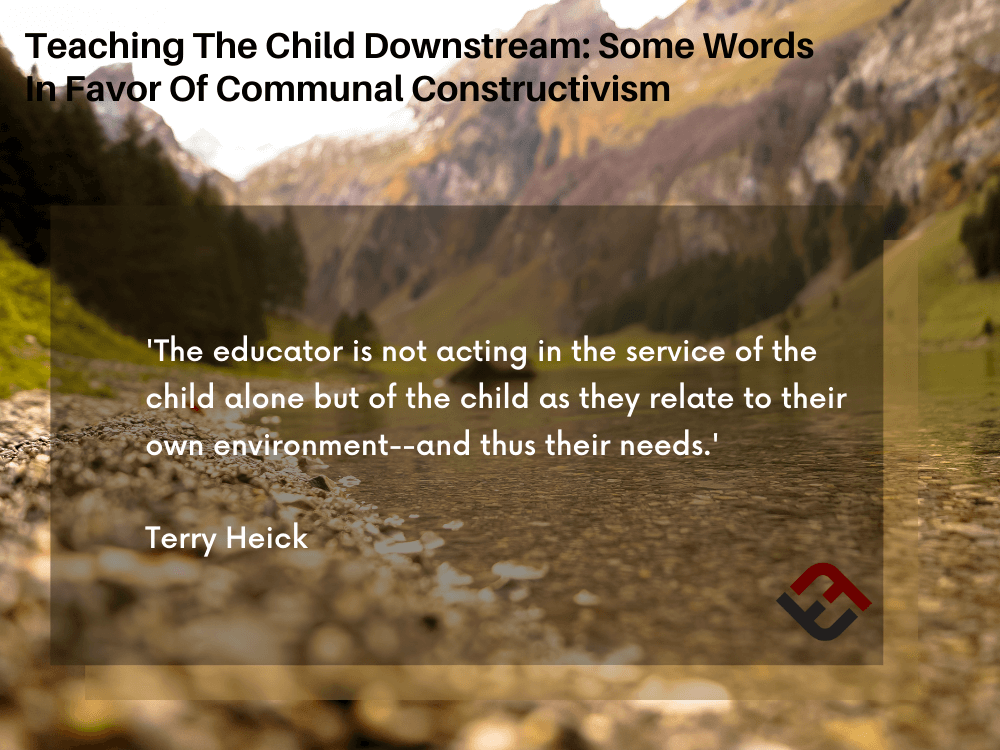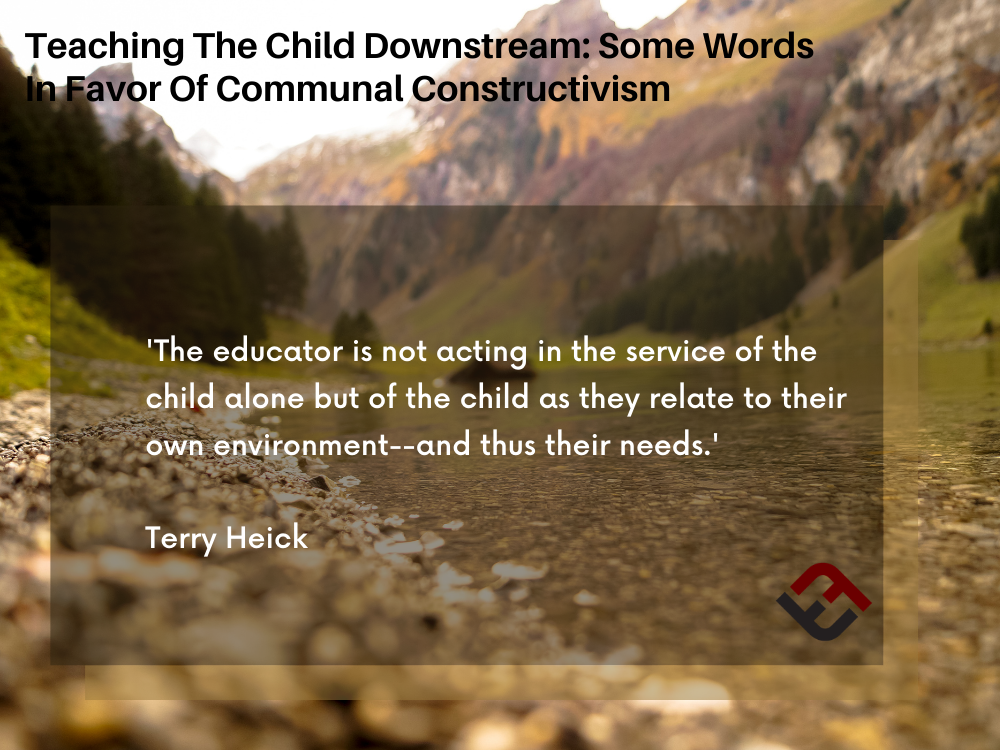
In Favor Of Communal Constructivism
by Terry Heick
The premise: the child is a complex living entity; they must also be given sufficient opportunities for their interests to be fulfilled by a living, breathing environment in order for them learning to be successful.
(How are we defining ‘success’? Where are our hunches and what are we doing with them?)
Natural sciences, like physics, relied upon experiments to prove or disprove theories. But social sciences, such as psychology, started with observations and needed theories to explain how observations could be used to make predictions. Teachers were asked to test the theories they were taught and make predictions in order to justify their planning.
Public intellectuals, such as Lysenko and Freud, attempted to refute those predictions instead of providing new theories. We can reject these accepted views and instead insist that knowledge is acquired by ‘Process’ and not ‘Know.’ The ‘Know’ is a result, so let’s consider a two-pronged educational approach, which we can call ‘Process’ and ‘Knowledge’. The Process part consisted of using observations to evaluate and change existing theories. To evaluate these theories requires us to observe what we think we’re observing and measure what we think we’re measuring.
There is a lot to reconcile: naming the students involved in various social experiments; wringing as much information as possible from social psychologists; agreeing with experimental results; and providing ‘rules’ for future hypothesis-testing by both the child and those charged with their intellectual nurturing (e.g., teachers). We can reject the claims that education should be concerned with ‘thought reform’ but what can we replace that sort of goal with?
To achieve this, it must be understood that teachers are not only the teachers of knowledge but also the teachers of process. The essence of the problem is that the student doesn’t come to school for the sake of school. They are there to change but are, in many ways, pressured to not change. The origins here are the theorizing in his or her own mind. It is very important that teachers plan for the proper reconstruction of the external world in relation to the objects and phenomena within the child’s mind and common ‘environments.’
What is a teacher’s role in a blended, flipped, self-directed, and fluid environment? The educator is not acting in the service of the child alone but of the child as they relate to their own environment–and thus his or her needs. This is a Constructivist and Communal Constructivism approach. The ultimate serving of the child is not to produce a merely scientific discovery but to help them respond to guide–and self-correct–their own discovery.
Just as in the natural world the behavior or emergence of a new structure is a reaction, so the learned behavior of a young person is predictable. The ‘symptoms’ or after-effects of the human behaviors are not only internal but also part of their environment itself and thus are indistinguishable and independent of the child’s conscious thought. The difficulties of the educator, therefore, have nothing intuitive about them. Rhetoric and ‘reality’ can then be used just as effectively in school as they are in life. The same with logic and emotion (which can be more important than understanding).
Identify the best inputs (i.e., most accessible, effective, and sustainable for teachers) is the part of a more systematic process. Upstream, the inputs and tone and metrics and catalysts for this ongoing (always moving like a river) discovery are two separate and critical tasks that can–and must–be done simultaneously.

